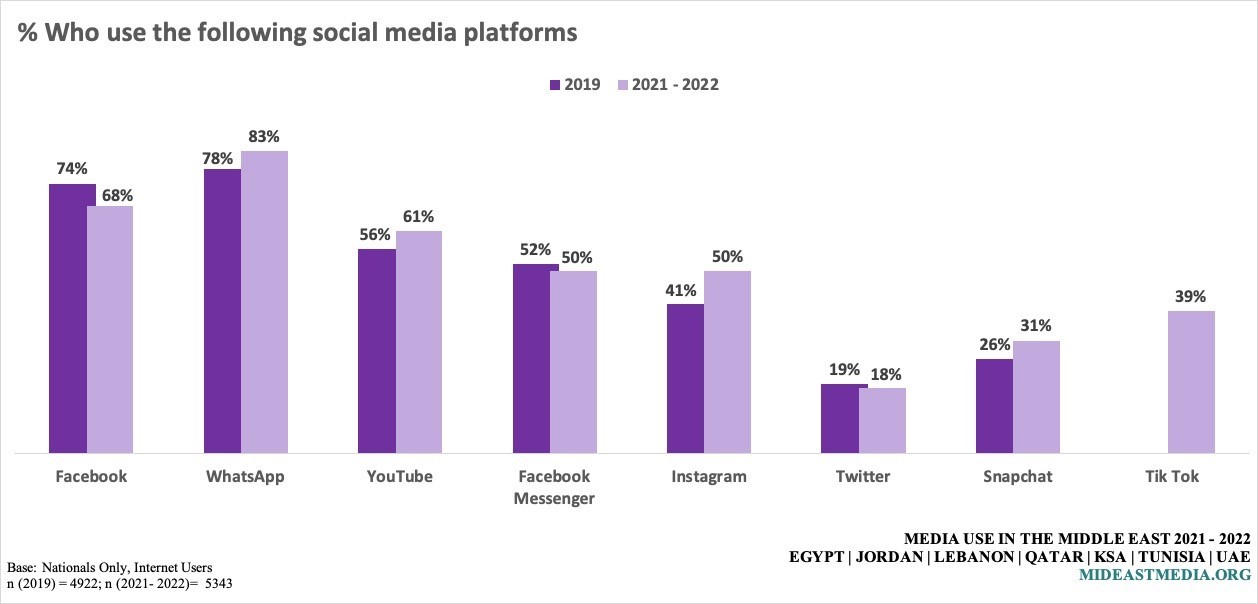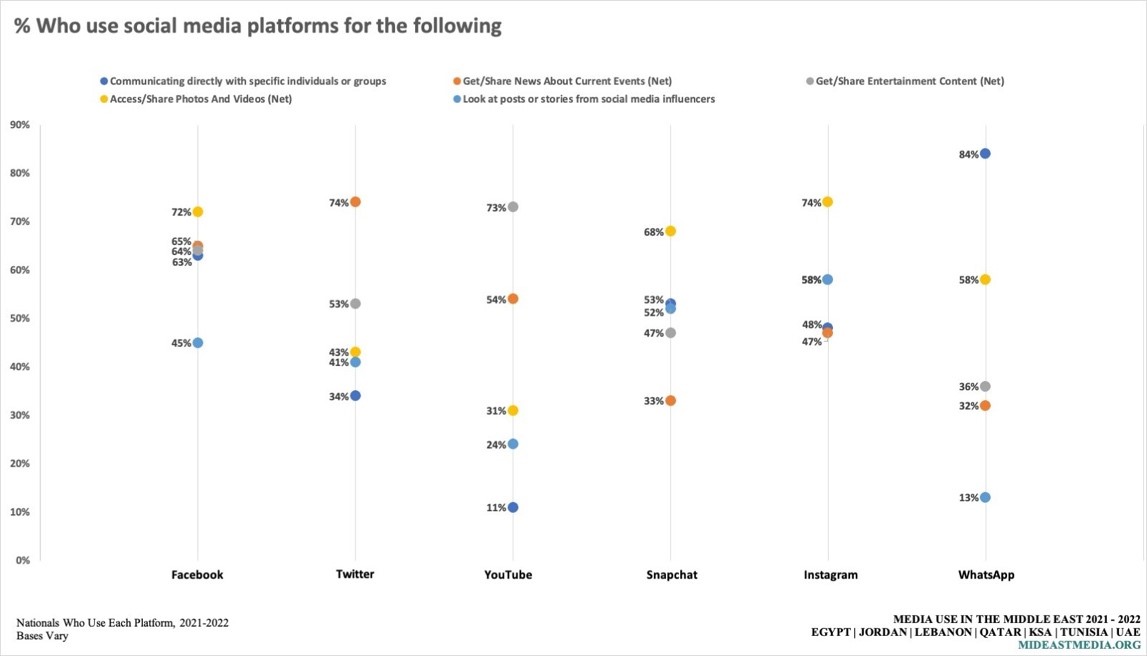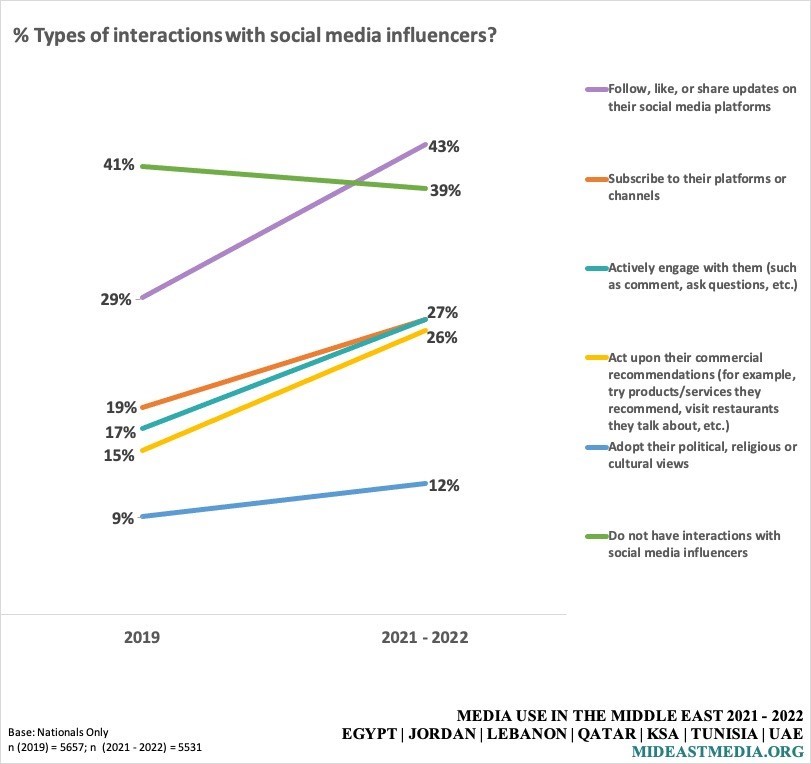Figure 19: Access to different social media platforms

Almost all nationals have access to the internet (97%) and own a smartphone (95%). No differences were recorded between gulf countries and non-gulf countries.
Meta-owned platforms (Facebook (68%), Messenger (50%), Instagram (50%)), and YouTube (61%) are the most popular social media in the region followed by twitter (18%) snapchat (31%) and TikTok (39%). Although Facebook has witnessed a decrease in its use in the past decade, it remains the second most popular platform in the region (68%) after WhatsApp (83%). It is worth noting the popularity of TikTok in the region, with a 39% leap from 2019 to 2021/22. This is significant because of the absence of this platform in the responses of last period’s participants.
Figure 20: Usage for each social media platform

Figure 20 shows a complex network of preferred media uses per platform. This year’s results suggest, for instance, that the preferred use for Facebook, Instagram and snapchat is accessing photos and videos. Interestingly, Facebook is the second most used platform for this purpose, overtaking snapchat, whilst Instagram remains the favourite in the region. WhatsApp remains the platform preferred by most respondents for communicating with individuals and groups via instant messaging. Following previous year’s trends, Twitter remains the platform preferred by most for accessing and sharing news, whilst YouTube is used essentially for getting and sharing entertainment video content.
Figure 21: Types of interactions with social media influencers

2 in 5 nationals do not interact with social media influencers content. 12% of nationals say that they adapt to the influencer’s cultural, or political views. A quarter of nationals also say they act upon the commercial recommendations of social media influencers.
Less than half of nationals (43%) follow, like, or share the updates of social media platform the updates of social media influencers.